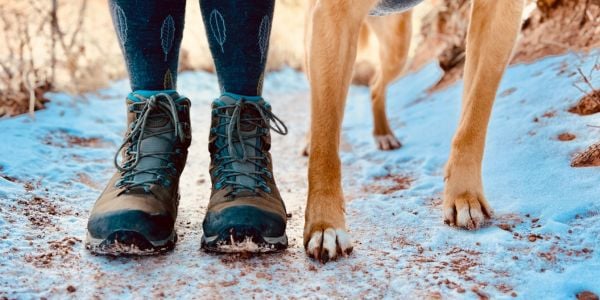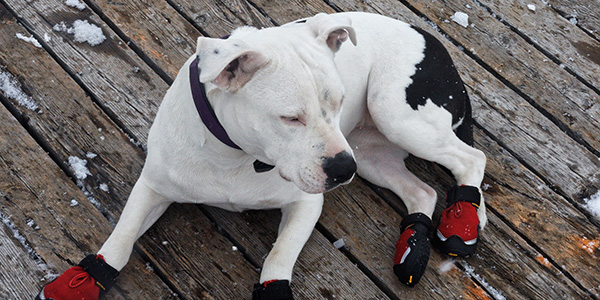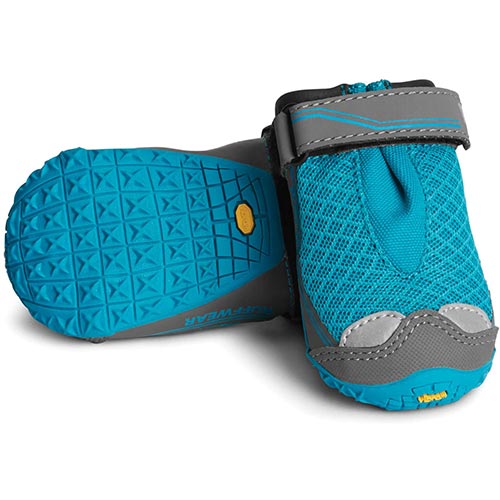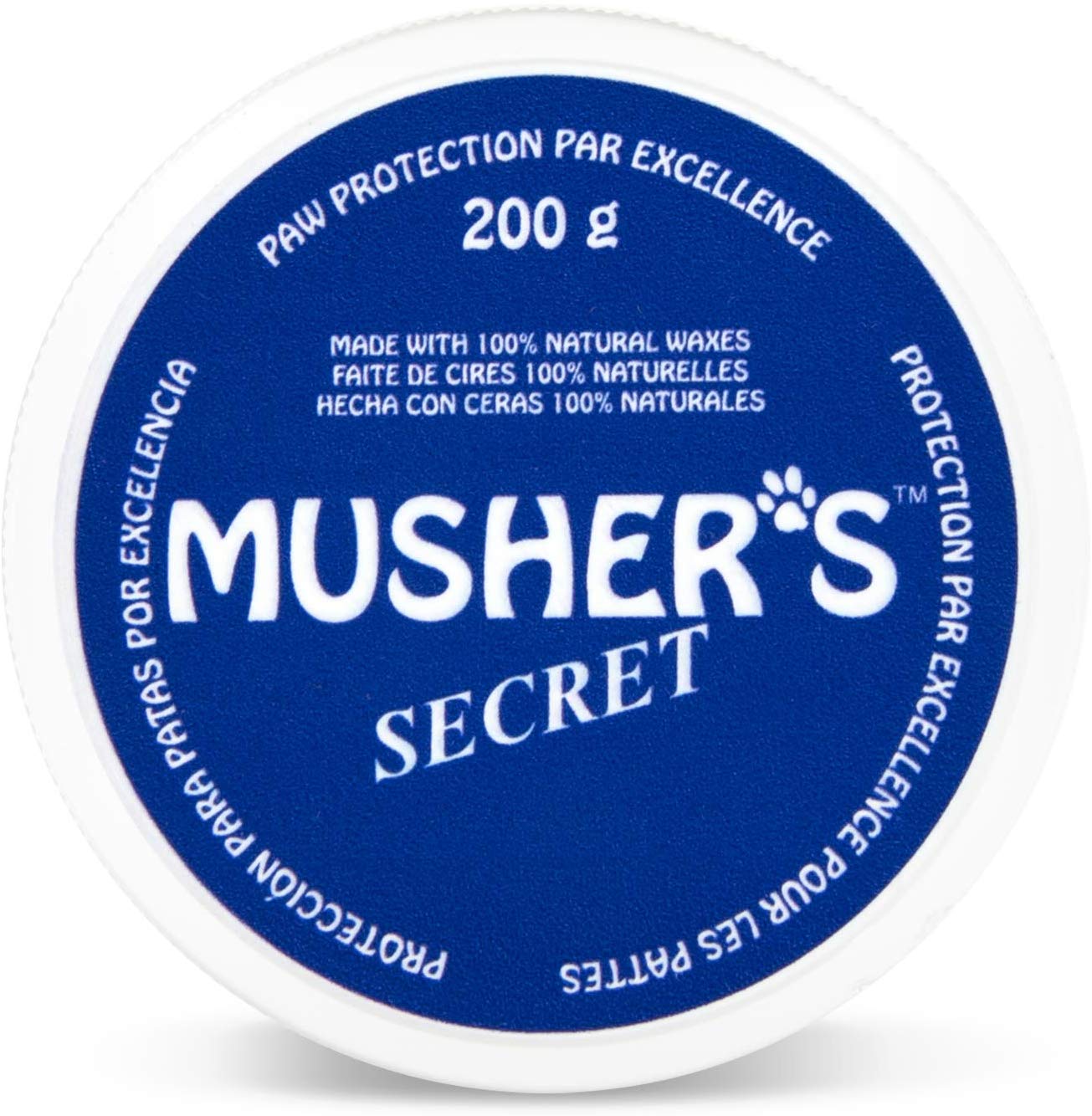Every time I hear the words “ice melt,” I am reminded of a funny story (well, it is funny to me!).
It was January in the south, and we were expecting an ice storm. Being concerned for my clients and wanting to be prepared, I headed to Lowes to get ice melt, the pet-safe kind, of course.
I searched everywhere. I finally asked an employee to help me. They responded, “We have it, but it is up on the top (meaning stored away) because it is spring here at Lowes.” I responded, “Well, it is winter outside, and a storm is coming!” They responded back, “Do you want us to get it down?” I took a deep breath and said, “Yes, please, and I am sure others will be here for it as well.”
I went back a few days later to get more to avoid the issue later. They had several pallets down at that point. The extra bags of ice melt worked so well that it scared away ice and snow for a couple of years!
Depending on where you live, ice melt is either a staple in your life or it is something you only use on rare occasions. But when you need it, you NEED it, and when you use it, you want to know you are using something safe for your pets as well as other’s pets.
However, even pet-safe ice melts have risks, and it is important to know what to do if you know or suspect a pet has eaten or licked any type of ice melt.
Regardless of whether it is spring, winter, or fall where you are, it is always good to be educated about ice melters!!
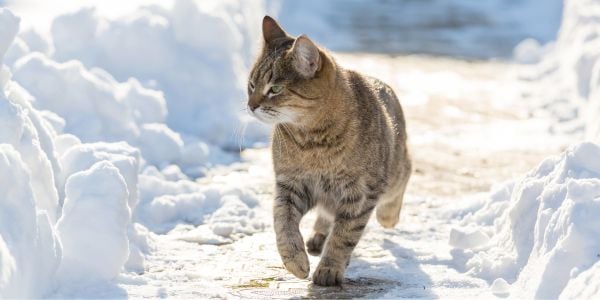
Skip to section:
Why Some Ice Melters Are Safer for Pets than Others
Did you know that when you and your neighbors are faced with icy driveways and sidewalks this winter, your choice of ice melt can have a significant effect on the health and safety of your dogs and cats as well as your neighbor’s animals?
It's true. And so it's important to know — and spread the word — that there are a few pet-safer choices for ice melts to be used around pets.
Note that no ice melts are completely pet safe; some are just safer than others.
The pet-safer options, which typically contain urea, glycols, or other non-salt components, work great and pose a lower health and safety risk for your cats and dogs.
Even though these products are safer, they can still cause problems if ingested in a large enough quantity. So, you should still take some steps to protect your pets and keep them away from the bulk containers of any ice-melting products you use.
Remember, more is not better – regardless of the type used. Be sure to read the package label to determine the recommended amount to use per foot in order to achieve the maximum effect with the least amount of product.
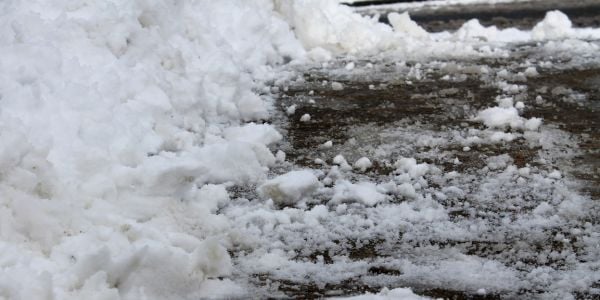
Symptoms of Pet Exposure to Ice Melt
Serious problems do not typically occur if your pet licks their paw or ground a couple of times that has been treated. However, it can still cause drooling, vomiting, and/or diarrhea.
Pets that consume significant amounts are at risk of:
- Nausea
- Moderate to severe vomiting and/or diarrhea
- Abdominal pain
- Dehydration
- Increased heart rate
- Muscle weakness
- Staggering
- Confusion
- Increased urination
- Tremors
- Seizures
If ice melt comes into contact with your pet’s nose, skin, or paws, it can cause discomfort, dryness, and burning.
For ice melts that contain calcium chloride, pets can also suffer from oral (mouth) and stomach ulcerations.
Eye irritation can occur if the ice melt or melt-water gets into a pet’s eye.
The ingredients, urea or magnesium chloride, present in pet-safer ice melts can cause stomach upset.
Problems Caused by Ice Melters
Traditional ice melts, those containing sodium chloride and other salts, can lead to a wide variety of problems for pets:
Skin irritation or burns
The jagged edges of the salt crystals can cause direct irritation, and the heat generated when certain salts melt the ice can cause irritation and burns (see the linked video at the end to see this heat generation).
Digestive upset
Not only can the jagged edges of the salt crystals irritate the lining of the digestive tract, but some of the common salt compounds can cause direct chemical irritation, too.
Nervous system problems
When ingested (either from a cat or dog licking the salt off their paw or the occasional dog who gorges on a bag of the stuff), the salt breaks down into its component elements and can be absorbed into the bloodstream. When this happens with sodium chloride (NaCl), it can cause sodium (salt) toxicity, resulting in nervous system signs: staggering, mental depression, seizures, and others.
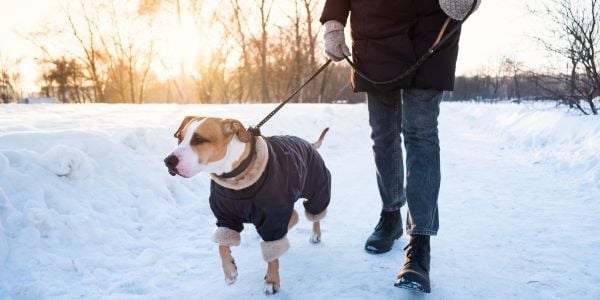
What to Do If Your Pet Is Exposed to Ice Melt
DO NOT attempt to induce vomiting if your pet consumes ice melt.
If you know your pet has consumed ice melt, has any symptoms beyond mild vomiting, or has neurologic symptoms, seek veterinary care immediately.
Note: If vomiting lasts for more than a couple of hours and/or there is blood present in it, seek veterinary care.
Having the ingredient list in the ice melt can be beneficial to the veterinarian. Bring or take a photo of the bag if you can.
If you know your pet may have walked on an area treated with ice melt or walked through melt-water, be sure to wipe their paws with a damp cloth or a FurBliss wipe (easy to tote on a walk) as soon as possible. Be sure to prevent them from licking or chewing their paws until they are completely clean.
If your pet ate some snow, sniffed an area treated with ice melt, or lapped any melt-water, rinse their mouth with water (using a clean syringe if you have one), wipe their nose with a damp cloth, and contact your veterinarian for further recommendations. Be sure to monitor them closely for any gastrointestinal or neurologic symptoms, as well as for oral ulcers.
Note: If your dog is prone to eating snow that may contain ice melt when you're out on walks, carry a bottle of water and an oral syringe to help with oral rinsing.
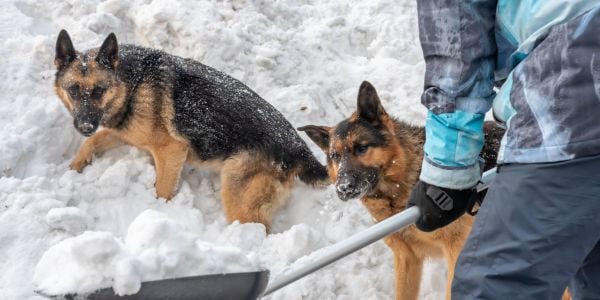
Pet-safe Ice Melts
- Safe Paw – 8lb shaker jug
- Just for Pets – 15lb shaker jug
- Green Gobbler – 35lb pail, works well in spreaders
- Natural Rapport – 35lb pail with scoop
- Safe-T-Pet - 8lb sharker jug
Do you want to see a video about how salt melts ice? It’s about 5 minutes long, but it's pretty cool and very informative.
How to Protect Your Pet's Feet From Snow and Ice
So, you've cleared away the ice and snow around your home using pet-safer ice melts, but you probably still want to go for regular walks (after all, your pup definitely still wants and needs to get in some good "outside time," even when it's cold). To further protect your pup's paws this winter, consider outfitting them with some sturdy dog boots for your wintery walks and/or applying a moisturizing and protective balm to their paw pads before heading out.
How to Find a Good Dog Boot
To protect your pup’s paws, look for a boot that is:
Sturdy – made of durable materials and constructed to withstand nasty winter elements and regular use.Well-fitted – not so loose that the boots bunch up or twist around on your dog’s paws, and not so tight that they’re difficult to get on or take off. With some dogs, it can also be helpful to have boots with multiple fasteners that keep them from falling off or getting flung off in a fit of doggie joy. Always be sure to measure (and re-measure) your dog's paws according to the manufacturer's instructions before ordering to make sure you're getting the right size for your dog.
Non-slip – good traction on the bottom of the boot to help your pup navigate icy paths. Slippery "soles" decrease your dog's ability to walk safely in the snow and ice, increasing their risk of slips, falls, and injuries.
Here are some of our favorite dog booties for winter weather:
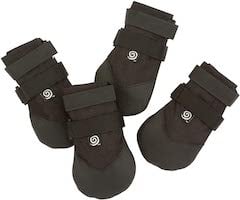
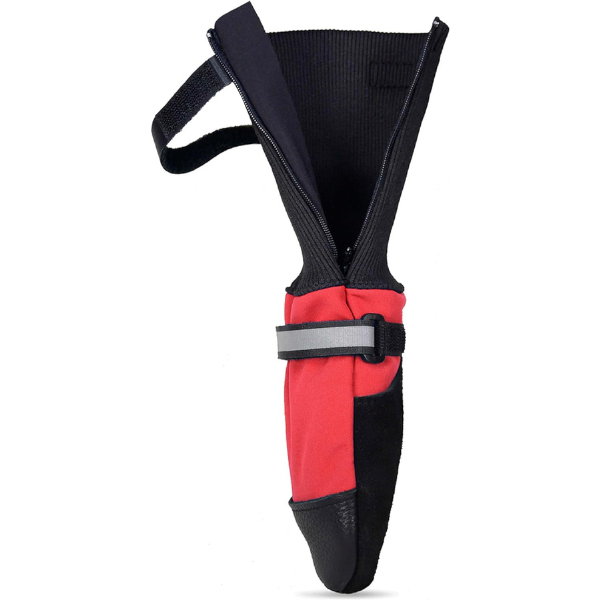
Note: Regardless of which dog boots you buy, take the time to train and acclimate your dog to wearing them before venturing outside, and always keep an eye on your dog for comfort when they first start using them. Not sure how to acclimate your dog? Grab some treats and check out our tips for introducing your dog to wearing booties here.
Paw-Protecting Balms for Dogs
Perhaps your dog won't tolerate boots? Or maybe you can't find a good pair that fits and stays on them? Or maybe their paw pads are just really dry and easily cracked, or you just want to go that extra step further to protect your pup's paws from the winter weather? A good paw-protecting balm may be just the thing your dog needs!
A good-quality protective balm for dog paws has the following qualities:
- Ingredients/formula that truly protects and moisturizes the paws and will help to prevent "snowsicles" from building up between your dog's toes. Look for balms with a good combination of natural waxes and oils — supplementation with vitamin E can help, too.
- Non-toxic in case it’s licked off. Avoid anything with xylitol (which does have humectant/moisturizing properties but is highly toxic to dogs!). The oils and waxes in these balms typically won't cause any toxicities, though they may cause slightly "looser" stools or have a mild laxative effect if ingested in large enough quantities.
Here is one of our favorite winter weather dog paw-protecting balms:
'Ice Melt' Alternatives
While these alternatives won’t melt the ice, they can help provide traction, hopefully prevent slipping, and they are safer for pets.
Some options include:
- Sand
- Gravel
- Kitty litter
- Wood ash
We at Preventive Vet hope you and your pets have a fun and safe winter!


